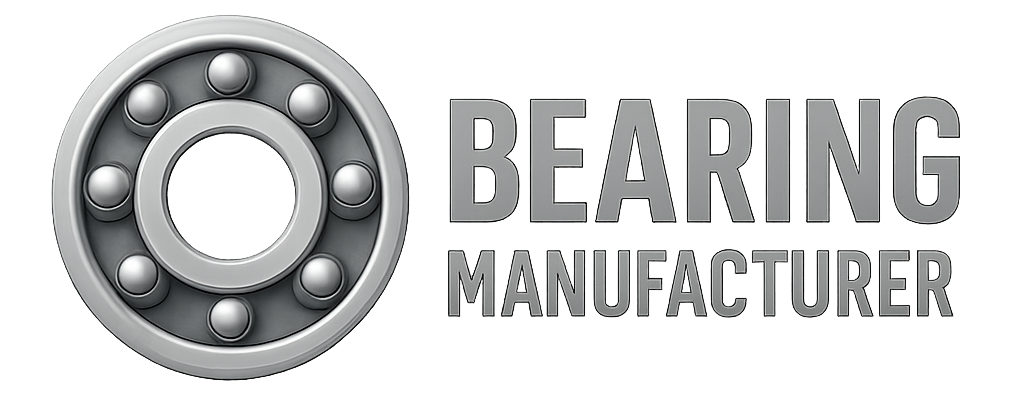Industrial bearings are essential for the smooth operation of machinery and vehicles. They reduce friction, improve efficiency, and extend service life. Among the many bearing types, ball bearings and wheel bearings are two of the most common. Understanding their differences can help engineers and buyers make informed decisions based on specific application needs.
1. What Are Ball Bearings?
1.1 Structure and Working Principle
A ball bearing is a rolling-element bearing that uses steel balls to maintain separation between the inner and outer races. The balls roll within a cage (retainer), reducing surface contact and friction while supporting both radial loads and a limited amount of axial load.
Key Features:
-
Design: Inner ring + outer ring + cage + steel balls
-
Function: Reduce rotational friction and support loads
-
Advantages: High speed capability, low friction, versatile applications
1.2 Common Applications
-
Precision instruments: Medical devices, measuring equipment (requiring high precision and low friction)
-
Industrial machinery: From small electric motors to large machine tools
-
Automotive components: Engine parts, gearbox assemblies
-
Consumer electronics: Hard drives, optical drives
1.3 Advantages
-
High efficiency: Smooth operation with reduced energy loss
-
Versatility: Suitable for multiple industries
-
High-speed capability: Performs well at high RPM
-
Load handling: Supports both radial and axial loads
1.4 Limitations
-
Limited load capacity: Not ideal for extreme heavy-duty conditions
-
Contamination sensitivity: Dirt and debris can accelerate wear
-
Precision installation required: Misalignment can shorten service life
-
Maintenance needs: Regular lubrication and inspections required
2. What Are Wheel Bearings?
2.1 Structure and Function
Wheel bearings are installed within the wheel hub assembly, connecting the wheel to the axle. They may use balls or tapered rollers as rolling elements. These bearings support the full weight of the vehicle and handle both radial and axial loads caused by driving forces such as cornering, acceleration, and braking.
Key Features:
-
Purpose: Support vehicle weight, absorb shocks, and enable smooth wheel rotation
-
Durability: Built to last under harsh road conditions
-
Safety: Critical to vehicle stability and handling
2.2 Role in Automotive Systems
-
Load support: Handles the entire vehicle weight
-
Friction reduction: Ensures smooth wheel rotation
-
Control and handling: Influences steering response and braking performance
2.3 Advantages
-
High reliability: Performs well under continuous heavy loads
-
Shock resistance: Endures bumps, potholes, and road vibrations
-
Low maintenance: Many modern wheel bearings are sealed and pre-lubricated
2.4 Challenges
-
Wear and tear: Heavy use and rough roads accelerate degradation
-
Contamination risks: Water, mud, and salt can damage seals
-
Replacement complexity: Requires proper tools and installation methods
-
Diagnosis difficulty: Symptoms can mimic other vehicle issues
3. Ball Bearing vs. Wheel Bearing: Comparative Table
| Aspect | Ball Bearings | Wheel Bearings |
|---|---|---|
| Structure | Inner & outer races + steel balls + cage | Inner & outer races + steel balls or rollers (often tapered rollers) |
| Design purpose | Reduce rotational friction; suitable for high-speed precision use | Support vehicle weight; enable smooth wheel rotation under load |
| Typical applications | Industrial machinery, electronics, some automotive parts | Automotive wheel hub assemblies |
| Load capacity | Medium radial + light axial loads | High radial + high axial loads |
| Speed performance | Excellent high-speed capability | Moderate speed, heavy-load stability |
| Maintenance | Requires lubrication and precise installation | Mostly sealed; replace when worn |
4. Bearing Selection Tips
Choose ball bearings if:
-
Your application requires high rotational speed and precision
-
Loads are moderate or light
-
The operating environment is clean
Choose wheel bearings if:
-
The application involves heavy and continuous loads
-
You need reliability under harsh conditions
-
You prioritize safety and stability
5. Conclusion
Ball bearings are ideal for high-speed, precision, and moderate-load applications, while wheel bearings are engineered for heavy-load, durability-focused, and safety-critical environments. Choosing the right type requires evaluating load, speed, operating conditions, and maintenance requirements.
At Bearing Maker, we supply a full range of ball and wheel bearing solutions, helping you achieve the right balance between performance, cost, and service life for your specific needs.
